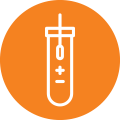PELVIC INFLAMMATORY DISEASE (PID)

What is it?
Pelvic inflammatory disease (PID) is an inflammation of the female reproductive system, that is, the uterus (womb), fallopian tubes or ovaries caused by infection.

How do you get it?
PID is caused by bacteria spreading into the uterus from the vagina or cervix. The most common cause for it is from another sexually transmitted infection such as chlamydia or gonorrhoea that is left untreated, however 70% of PID is by an unidentified cause. PID can also occur after pelvic operations, a pregnancy, or in the first few weeks after an IUD (intra-uterine device for contraception) is put in.

Symptoms
Most of the time, the signs that you have PID are not very obvious, and sometimes there are no signs at all.
This is why you must be extremely careful if you notice any of the following symptoms:
- cramping, pain or tenderness in the pelvic or lower abdominal (stomach) area, which may worsen with movement.
- pain when having sex
- bleeding between periods or after sex
- increased or different discharge from your vagina
- nausea and/or vomiting
- fever.
Absence of these symptoms does not exclude a diagnosis of PID

Is it serious?
Pelvic inflammatory disease can occasionally cause infertility (difficulty getting pregnant), ectopic pregnancy (a baby growing in a place outside the womb), or long-term pain. These things are more likely to happen if the treatment is late, so it’s important to get treated straight away.

How do you get tested?
If you have taken part in any sexual activity and notice any of the above symptoms of PID, you should visit your nurse, doctor or sexual health clinic to get tested as soon as possible. There is no one single test for PID. Health professionals will rely on your symptoms and what is found on examination to decide if you have PID. Often the tests will not tell you the cause.

Treatment
Luckily, if you treat it early, PID can be cured with antibiotics in the form of an antibiotic injection and a two-week course of antibiotic tablets. Finish your antibiotics, even if you feel better and the tests are all fine. If you have had the disease for a long time before you find it, you may have to be hospitalised in order to get the necessary treatment.

Prevention
Condoms used correctly every time you have sex from start to finish will provide protection from PID.

Telling your sexual partner/s
If you are diagnosed with PID, you’ll need to inform anyone you have had sexual contact with in the last three months. Your nurse, doctor or sexual health clinic can help you deal with this situation, or read our section on How to tell a partner about STIs?



